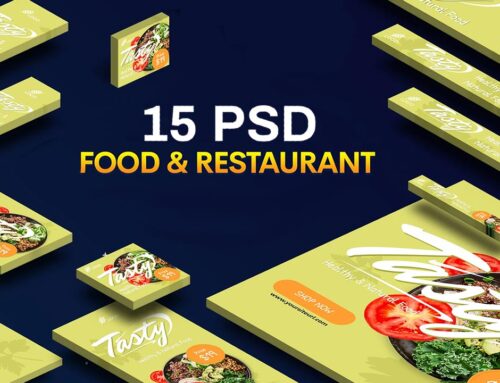Copywriting is an essential skill that can make or break your business. Whether you’re an entrepreneur, a marketer, or a content creator, effective copywriting can help you communicate your message clearly and persuasively. In today’s digital age, it’s more important than ever to know how to write compelling copy that not only captures attention but also drives action.
In this article, we will explore 10 copywriting techniques that you can start implementing today to improve your writing and boost your results. From mastering the art of storytelling to understanding the psychology of persuasion, these techniques will provide you with valuable insights and practical tips to help you create copy that engages your audience and converts prospects into customers.
Table of Contents
- Know Your Audience
- Use Powerful Headlines
- Incorporate Storytelling
- Focus on Benefits, Not Features
- Create a Sense of Urgency
- Write Conversationally
- Use Social Proof
- Address Objections
- Use the (PAS) Copywriting Model
- or try using the (AIDA) Copywriting Model
- Edit and Revise
- Final Thoughts
- Sources
Know Your Audience
Understanding your target audience is the foundation of effective copywriting. Before you start writing, take the time to research and define your ideal customer. Consider their needs, wants, and pain points, and use this information to create a buyer persona that will guide your copywriting efforts.
- Identify your target audience’s demographics and psychographics
- Understand their needs, desires, and pain points
- Create a buyer persona to guide your writing
Use Powerful Headlines
Headlines are often the first thing your audience sees and can make or break your copy. A compelling headline grabs attention, sparks curiosity, and encourages readers to continue. Spend time crafting headlines that are clear, concise, and intriguing.
- Use numbers, questions, or strong adjectives to create interest
- Keep headlines clear and concise
- Test multiple headlines to find the most effective option
Incorporate Storytelling
Storytelling is a powerful tool that can help you connect with your audience on an emotional level. By sharing stories that resonate with your readers, you can make your message more memorable and persuasive.
- Use personal anecdotes or customer success stories
- Build a narrative that addresses your audience’s pain points
- Incorporate sensory details to create vivid imagery
Focus on Benefits, Not Features
When promoting a product or service, focus on the benefits it provides rather than simply listing its features. Your audience is more interested in how your offering can solve their problems or improve their lives. Clearly communicate the value and advantages of your product or service to make it more appealing.
- Identify the key benefits of your product or service
- Use customer-centric language to show how your offering addresses their needs
- Highlight the unique value proposition of your offering
Create a Sense of Urgency
Creating a sense of urgency can encourage readers to take action quickly. Use time-sensitive language, limited-time offers, or exclusive promotions to make your audience feel like they need to act now to avoid missing out.
- Use phrases like “limited time” or “act now”
- Offer incentives for taking action immediately, such as discounts or bonuses
- Use countdown timers or stock levels to visually emphasize urgency
Write Conversationally
Writing in a conversational tone makes your copy more engaging and relatable. Use simple language, contractions, and an active voice to make your message easy to understand and connect with your audience.
- Use everyday language and avoid jargon
- Write in short sentences and paragraphs
- Address the reader directly using “you” and “your”
Use Social Proof
Social proof, such as testimonials or case studies, can help build trust and credibility with your audience. Incorporate social proof into your copy to show that others have had positive experiences with your product or service.
- Feature customer testimonials or reviews
- Include case studies or success stories
- Highlight any media coverage or industry recognition
Address Objections
Addressing potential objections or concerns in your copy can help reassure your audience and overcome barriers to conversion. Anticipate common objections and provide clear, concise responses to put your reader at ease.
- Identify potential objections or concerns
- Provide clear, concise responses to address them
- Use empathy and understanding to build trust
Use the (PAS) Copywriting Model
The PAS (Problem, Agitate, Solve) copywriting model is a persuasive technique, aiming to identify, amplify, and provide solutions to the audience’s pain points, effectively engaging and enticing them towards the proposed product or service.
- Problem: Identify a problem or need that resonates with the audience.
- Agitate: Amplify this problem, intensify their feelings, and show consequences.
- Solve: Offer your product or service as the ideal solution to the problem.
or try using the (AIDA) Copywriting Model
The AIDA (Attention, Interest, Desire, and Action) copywriting model is a tried-and-true copywriting formula that can help guide your writing. Follow the AIDA model to create a clear structure that leads your reader through each stage of the sales process.
- Capture attention with a powerful headline
- Generate interest by highlighting benefits and addressing pain points
- Create desire by evoking emotions and painting a picture of success
- Encourage action with a strong call-to-action (CTA)
Edit and Revise
Editing and revising your copy is crucial to ensure clarity, consistency, and effectiveness. Take the time to review your writing, remove unnecessary words or phrases, and refine your message to create the strongest possible impact.
- Read your copy out loud to identify awkward phrasing or inconsistencies
- Use editing tools, such as Grammarly, to check for errors and readability
- Get feedback from others to gain a fresh perspective and make improvements
Final Thoughts
In the end, the most important takeaway from this article is that the key to effective copywriting lies in understanding your audience and crafting a message that speaks to their needs, desires, and pain points. By implementing these 10 copywriting techniques, you can create copy that not only grabs attention but also persuades your audience to take action.
Sources
By incorporating these techniques into your copywriting arsenal, you can create more engaging, persuasive, and effective copy that drives results for your business. Remember, good copywriting is an ongoing process that requires practice and refinement. Stay committed to learning and improving, and you’ll be well on your way to mastering the art of copywriting.








